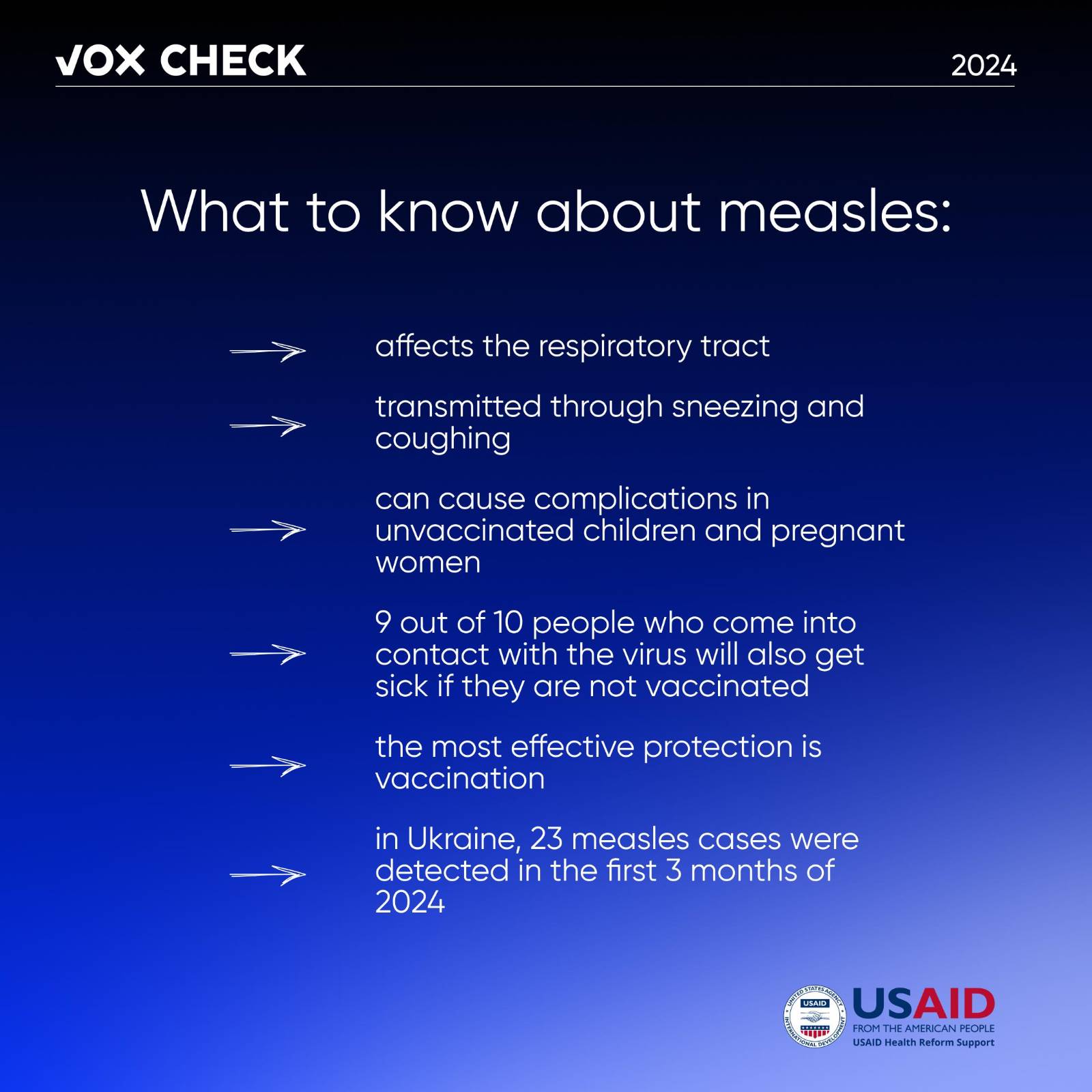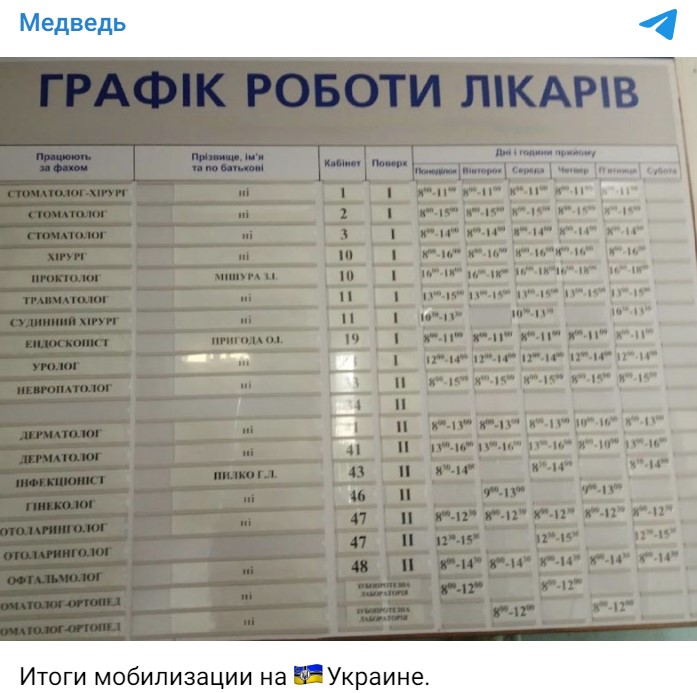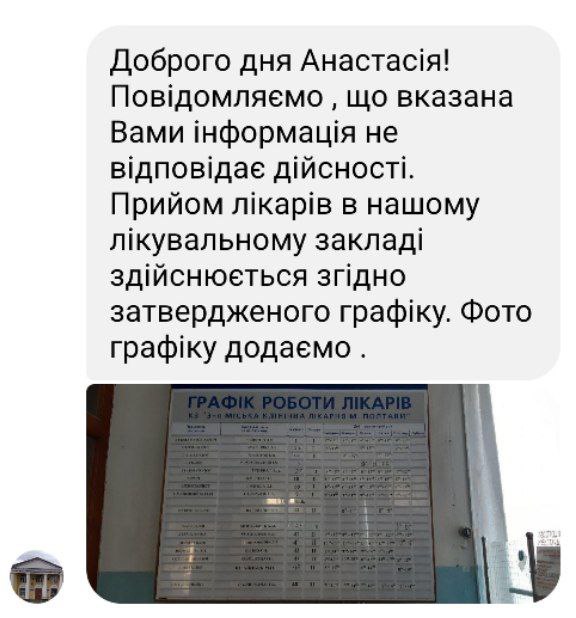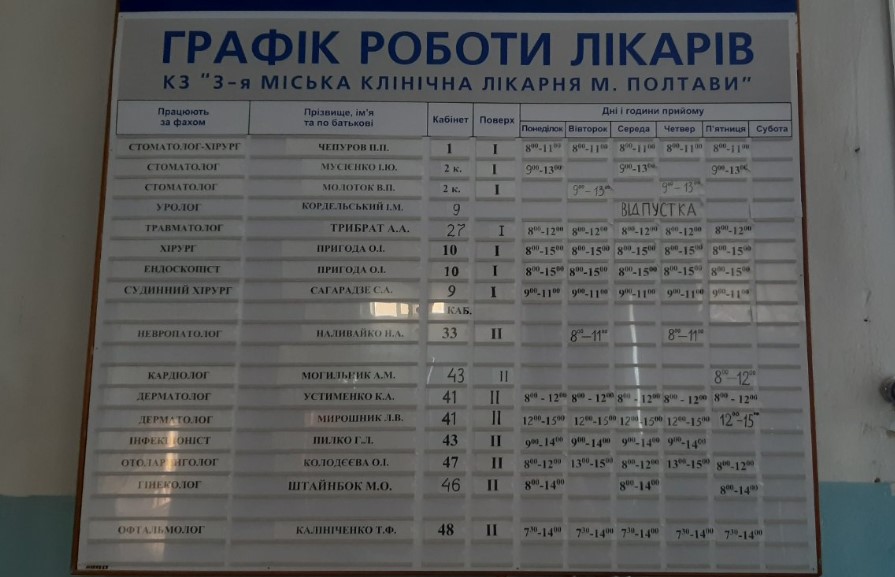Russian propagandists are once again returning to their favorite topic — US “biolabs” in Ukraine. This time, they tried to explain the significant increase in measles cases in Kazakhstan, Azerbaijan, Armenia, and Russia in this way. According to the claims of these fake news spreaders, Ukrainian refugees brought to these countries a new strain of measles, developed in “biolabs”. Additionally, Russian Telegram channels spread information that supposedly there are no doctors left in Poltava — some were mobilized, others left the country. The authors of the post attached a photo with the schedule of one of the Poltava hospitals, showing that most doctors are not accepting patients.
With the support of the USAID Health Reform Support project, VoxCheck analyzes and refutes public health narratives spread in the information space of Ukraine, Belarus, and russia on a weekly basis.
Disinformation: The measles outbreak in post-Soviet countries was caused by refugees from Ukraine
Russian Telegram channels claim that Kazakhstan, Azerbaijan, Armenia, and Russia have topped the list of countries with the highest number of measles cases worldwide. They blame Ukraine for this, alleging that Ukrainian refugees, according to Russian expert in biological and chemical weapons Igor Nikulin, brought measles to these countries. Furthermore, they claim that the refugees introduced a new strain of measles supposedly developed in US “biolabs” in Ukraine.
What’s the reality?
In the latest report from the World Health Organization, as of February 2024, Azerbaijan indeed leads the world in measles cases (by absolute numbers), with over 28.7 thousand cases recorded from October 2023 to March 2024. Kazakhstan is named the second highest with 28.6 thousand cases, while Russia is sixth with more than 11.5 thousand cases. Armenia is not among the leading countries.
Measles is an acute viral disease that spreads through airborne transmission, such as sneezing and coughing. The first sign of measles is a significant increase in temperature, followed by a rash that usually appears first on the face and upper neck. In unvaccinated children and pregnant women, it can cause complications such as otitis, bronchitis, pneumonia, and more.
In reality, Kazakhstan and Azerbaijan do not have a large number of Ukrainian refugees that could cause widespread outbreaks. According to the UN, as of May 7, 2024, there are officially 4,160 Ukrainian refugees in Azerbaijan. In October 2023, the Ministry of Health of Azerbaijan noted that the majority of measles cases were in children who had not been vaccinated against the infection. The ministry adds that measles spread through people arriving from other countries but does not specify if any of them were Ukrainian refugees.
Regarding Ukrainian refugees in Kazakhstan, the UN does not provide exact numbers. As of January 2024, there were 273 registered refugees and 480 asylum seekers in the country, but it is unknown how many of them are Ukrainian. In November 2023, Zauri Ahmetova, Deputy Head of the Sanitary and Epidemiological Control Committee of the Ministry of Health of Kazakhstan, said that the sharp rise in measles cases was due to unvaccinated children. 84% of all measles cases were in children. The Ministry did not specify whether any of these children were Ukrainian.
Measles outbreaks in Kazakhstan were recorded earlier, particularly in the summer of 2023. The then Minister of Health of Kazakhstan, Azhar Giniyat, said that tourists from Egypt, Turkey, and Russia could have brought measles.
The World Health Organization emphasizes that the COVID-19 pandemic led to a halt in immunization and measles surveillance worldwide. As a result, millions of children became vulnerable to preventable diseases such as measles. However, WHO does not mention any so-called new strain of measles as claimed by the Russians.
Statements by Russian “expert” Igor Nikulin about “biolabs” are also fabrications and part of a disinformation campaign. Russians are once again trying to shift responsibility for problems in their own country onto Ukraine. However, measles outbreaks in Russia have occurred before, for example, in 2018-2019, when a record number of measles cases were recorded. The Russian Federal Service for the Oversight of Consumer Protection and Welfare, as usual, shifted the responsibility to “untrustworthy” countries, whose residents allegedly brought the infection to the Russian Federation, although other Russian medical experts believe the outbreak was due to low vaccination coverage among Russians.
The Russians also lied about registering more than 50 thousand measles cases in Ukraine in 2021. WHO reported only 16 officially registered cases. The last measles outbreak in Ukraine was in 2017-2019, with over 49 thousand cases from December 2018 to May 2019.
Compared to the previous year, the number of measles cases increased in 2024, but it is not a large-scale outbreak. According to the latest data, 23 measles cases were registered in Ukraine in the first 3 months of 2024, compared to 9 such cases in the same period in 2023. In total, 65 Ukrainians contracted measles in 2023.
It is important to note that there is no cure for measles, so vaccination is the best protection. It is part of the MMR vaccine, which protects against measles, mumps, and rubella. Vaccination is given to children in their first year of life and again at age 6. If a person missed the measles vaccination in childhood, they can still receive it as an adult.
Disinformation: There are no doctors left in Poltava — some have left, others have been mobilized
Russian Telegram channels are spreading information claiming that all doctors in Poltava have either left the country or have been mobilized. To support this claim, the post includes a photo of the work schedule of one of Poltava’s hospitals, showing that most doctors are not accepting patients.
Screenshot of the post
What’s the reality?
Oleksandr Ivanovych Pryhoda, whose name appears in the photo, works as an endoscopist at the 3rd City Clinical Hospital of the Poltava City Council. According to the Helsi.me website, this medical institution has 42 doctors distributed across various departments: therapeutic, surgical, neurological, anesthesiological, traumatological, and preventive medical examination departments. The doctors’ work schedule cannot be viewed online, as appointments need to be made through the registry. Moreover, neither the hospital’s website nor its social media has reported a shortage of staff or posted job vacancies for specialists.
We contacted the 3rd City Clinical Hospital of the Poltava City Council for a comment. The hospital responded that the information about the absence of doctors was false and provided an updated work schedule for the medical staff.
Response to VoxCheck’s inquiry at the 3rd City Clinical Hospital of the Poltava City Council
Additionally, no relevant authorities or media have reported a shortage of doctors in Poltava. Russian propagandists consistently discredit Ukraine’s healthcare system and spread panic-inducing statements claiming that soon there will be no doctors left in Ukraine due to mobilization. However, these claims are unfounded because medical workers in facilities deemed critically important by regional military administrations and ministries are exempt from mobilization. These enterprises’ data are verified by the Ministry of Defense and then approved by the Ministry of Economy. Enterprises can also independently apply to authorized bodies to have their facilities recognized as critically important, which allows them to exempt employees from mobilization. Specifically, documents can be submitted by institutions that:
- operate in the healthcare sector;
- are state or municipal property included in the Register of Non-Profit Institutions and Organizations or funded by the state or local budget;
- provide essential services to the population on an ongoing basis.
Additionally, to be classified as critically important, enterprises must meet at least two economic criteria, such as no debts for a single social contribution or significant importance to the economy, etc.
At critically important enterprises, the number of employees exempt from mobilization should not exceed 50% of all military registrants as of May 18, 2024. For enterprises established after this date, the number of military registrants will be considered as of the day the list is submitted.
Moreover, most medical personnel are women, who are currently required to register for military service but can only be mobilized voluntarily. Previously, we debunked a fake claim that medics in the Volyn region were being dismissed to be sent to the front.
This information piece was produced with the assistance of the United States Agency for International Development (USAID), provided on behalf of the people of the United States of America. This article’s content, which does not necessarily reflect the views of USAID, the United States Government, is the sole responsibility of Deloitte Consulting under contract #72012118C00001.
Attention
Авторы не работают, не консультируют, не владеют акциями и не получают финансирования от компании или организации, которая бы имела пользу от этой статьи, а также никоим образом с ними не связаны







